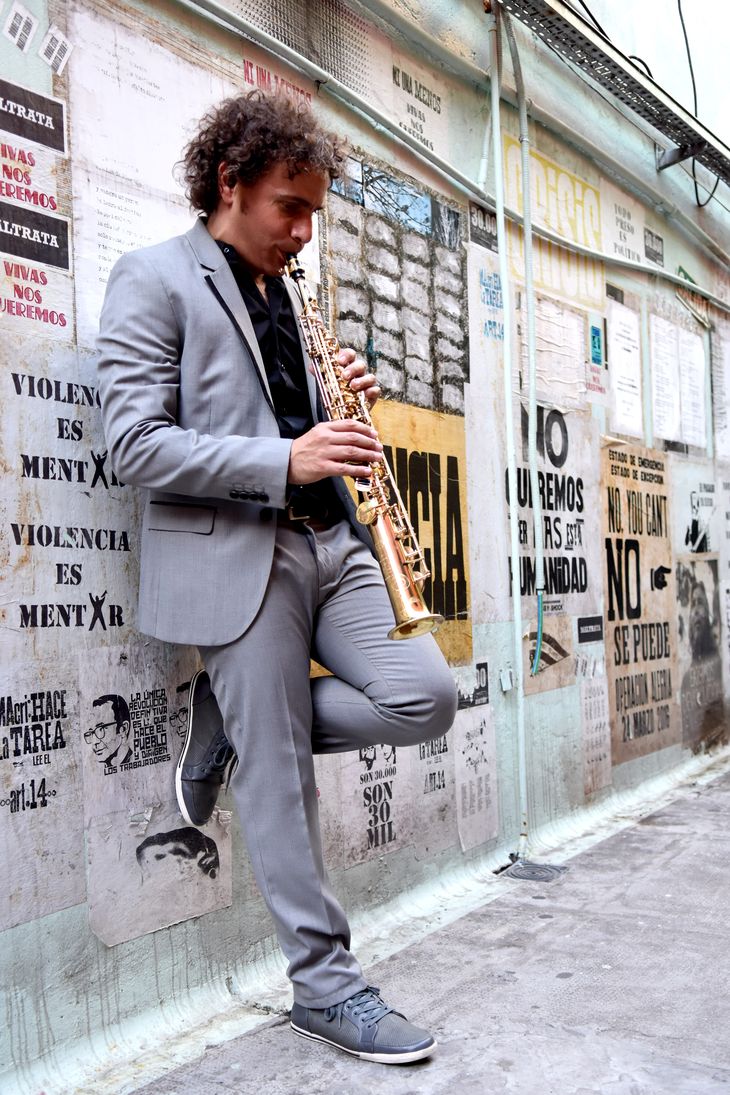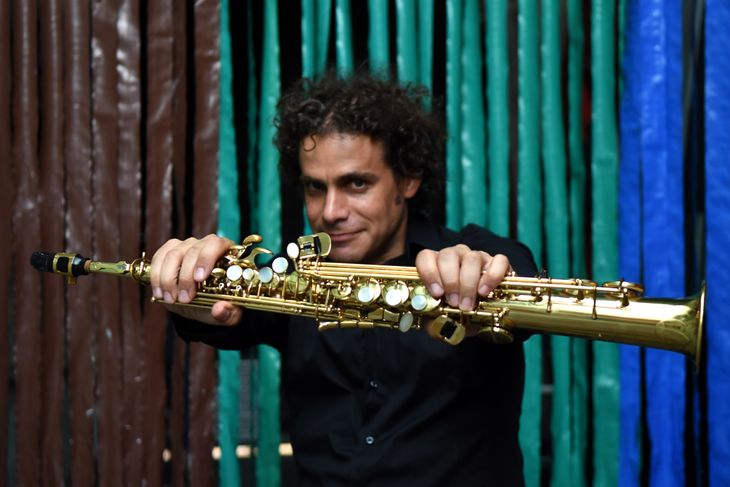“We are at a time in the music industry where everything has to be innovative, thematic, have a thread and a lot of collaboration with other artists. “Maybe making an album with seven good songs and that’s it can work again,” says Berardo Monk, saxophonist and composer nominated for the Latin Grammy, the Gardel Awards, sessionist on the tour of Fito Paez for the 30 years of “Love After Love”, musician for the soundtracks of the films “Teatro” by Francis Ford Coppola and “Wild Tales” by Damián Szifrón.
monk presents his eighth album, “Cosmofónico”, with his own compositions between jazz and tango, on Wednesday, June 12 on BeBop. We talked with him.
Journalist: Why did you leave out things that you included in this album today?
Bernardo Monk: It’s not that I left them aside, it’s simply an evolution, one album leads to the other. From those first albums where the idea was to fit strictly into tango, little by little I began to pay my dues in the genre and was able to give way to my other baggage. I realized that I was interested in making a complete musical synthesis. I always took care of writing and playing whatever sounded in my head and at the beginning I was very dedicated to studying a genre and then that was what sounded like. Little by little I was releasing creativity and everything before came out, the jazzy thing, which is a kind of specific weight that after seven albums it is quite natural that I play and write what in essence left the musical path.
Q: What is ringing in your head today?
BM: They are always stories, on the street I observe, I listen to see what I can rescue, be it a phrase, a face, a situation. Nature resonates, I dedicate myself to observing birds in freedom, which at the same time worries me because ecology and the environment worry me, it makes me sad or happy when there is good news. I am moved by sport and what it mobilizes, football especially, my family moves and inspires me, many of my themes have their origin there.
M8.jpg
Q: How is cinematography present in your songs?
BM: I visualize an image that could be a scene and many times I imagine the music as a scene from a movie, for now there is no complete film with my music. Sometimes things arise that I objectively want to describe, whether it is the sports suite, which generates passion, where I describe moments, images, situations of the sport itself through musical elements. I don’t write music from the musical point of view but from what the musical aspect awakens me. I start playing a melody or chord and it automatically refers me to an image from which I work.
Q: How do you see jazz today? Many go to fusion, to the amalgamation of styles, why?
BM: I see it in many ways. My jazz side is not so linked to open or free styles, I like some things but it is not where I fit in the most. The amalgamation has to do with the enormous amount of music that exists. Playing a standard or recording a blues today has more and more difficulty in terms of its reason for being. From there the search for something more unique is generated and fusions with the music of our origins are resorted to. Good merger cases know both worlds, otherwise they remain halfway. When you study jazz in depth you notice that everything has already been done, in a way that is very difficult to compare. Furthermore, one lives in a place where one does not constantly breathe jazz, that is where fusions come, Argentine jazz, which is a music that takes philosophy from the way of writing, harmonizing and approaching an improvisable theme. You may not have a single swing eighth note in your entire repertoire. The fusion comes from the search to reinvent something that has been around for a long time and much has already been invented.
M13.jpg

Q: How do you see art and culture today?
BM: I see good things and conflicts. Culture is always in conflict, if you go to the first expressions it was already difficult to locate art for Plato, it is a problem that is not new. But today and increasingly, those in charge of disseminating and generating spaces, often embrace a formula of playing it safe such as being tributes, music that is already known and, although it may be work for the musician, those of us who consider the original music and the renovation, there is a problem. There is a great phrase “tradition is to keep the flame and not worship the ashes” and there is a lot of ash worship. But there are also many who produce and listen to very good things.
Q: What can you say about new diffusion modes like Spotify?
BM: We have to understand what is there and we must try to make it work. They don’t work the same for all of us, there are many things that work for a massive pop artist but not for me, for example releasing singles. Spotify is a step backwards in some cases, there are no credits, there is no graphic concept, it is not known who played on the albums, that is a big step backwards. Royalties are disadvantageous, in some ways we now give away what we used to sell, to generate an income from platforms we need a huge number of reproductions, and each person has to see how they generate them. It is still a challenge but it is difficult. In this self-management there is a little lie that now one can show their work to the world. Platforms are something that continues to be governed by big names. Freelancing was never easy with or without platforms.
Source: Ambito
I am an author and journalist who has worked in the entertainment industry for over a decade. I currently work as a news editor at a major news website, and my focus is on covering the latest trends in entertainment. I also write occasional pieces for other outlets, and have authored two books about the entertainment industry.




